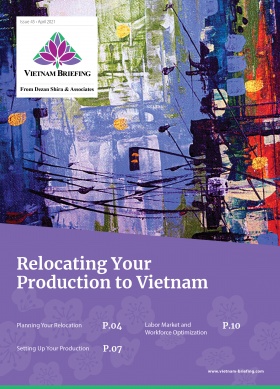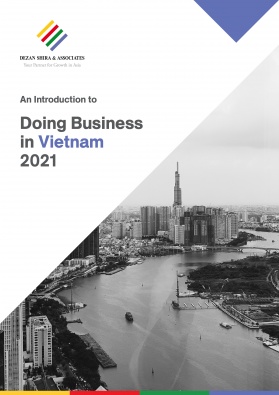Q&A: Adopting a China+1 Strategy in ASEAN: Diversifying Supply Chains to Minimize Risks
Rising on the back of increasing labor costs in China, the Sino-US trade war, and COVID-19-related supply chain and manufacturing disruptions, businesses need to rethink whether it is still adequate to rely on their current suppliers or single country sourcing strategies. International business requires that business owners ensure continuity despite these challenges, by developing alternative options, mitigating associated risks, and implementing strategies for diversification.
In our recent webinar, Dezan Shira & Associates’ Saponti Baroowa, Business Intelligence Associate Director, discussed why companies are increasingly moving away or planning to move operations from China. He highlighted the main strengths of five major ASEAN economies – Indonesia, Malaysia, the Philippines, Thailand, and Vietnam – that have emerged as attractive alternative production hubs for international investors. The webinar can be viewed here.
We highlight key insights below:
Why is there a need to diversify supply chains given your expertise?
The China-US relationship is unlikely to change in the near term. Given the US-China trade war and Biden’s presidency, we do not foresee significant change after Trump. There may be more engagement by the current US administration, but in terms of trade and US foreign policy towards China, no thaw in relations between the two countries is expected. Given this context, it is imperative to have a China plus one strategy and diversify supply chains. While it may not be possible to relocate all your production out of China, it is prudent to look at alternative locations for manufacturing or relocating part of your supply chain.
In this context, ASEAN including countries such as Vietnam are strong contenders to be alternate production hubs. ASEAN has been joining free trade agreements even before the US-China trade war and the pandemic and is driven by economics rather than politics.
What are some key considerations for moving manufacturing to ASEAN?
There are several factors – investors should look at:
- Costs for relocation;
- Access to suppliers;
- The labor market including size, wages, and skill development;
- Supporting industries;
- Logistics and infrastructure; and
- Tax and regulatory regime.
For example, labor cost is a key component when planning a manufacturing shift. In recent years we have seen that wages in Southeast Asia are much lower than in China. While some countries such as Indonesia and Vietnam are witnessing a higher growth rate in wages, they are still lower than China’s.
Another example is diversification. As per market research firm, Gartner, 33 percent of respondents have either moved sourcing and manufacturing out of China or plan to do so in the next two to three years.
Therefore, reducing supply chain costs in the long term as well as creating a resilient supply chain is crucial.
So, what are some ASEAN alternatives?
This will depend on the product you want to manufacture, costs, labor availability, and a variety of other factors. For example, in ASEAN, almost all countries recorded negative GDP growth except for Vietnam which reported a positive GDP of 2.91 percent in 2020, despite the pandemic. Vietnam is also expected to experience one of the highest GDP growths in 2021 among its peers. This will all depend on how the pandemic is tackled, however. In broad terms, ASEAN, in general, will bounce back provided the pandemic is controlled.
We also need to look at major industries and investment opportunities. For example, governments within ASEAN are promoting certain industries; Vietnam wants to move up the value chain so the government is aggressively promoting high-tech manufacturing. In Thailand, there is a focus on automated tech, aerospace, medical devices, robotics – which is a concerted effort by the government.
What are some investor challenges?
ASEAN countries are quite closely matched. Malaysia appears to be more developed and along with Indonesia comes out to be as investor-friendly. However, we need to keep in mind this will all depend on what the investors wants. While Malaysia ranks well, wages in Vietnam are lower. Vietnam is also well-integrated with free trade agreements compared to others, which may help with importing and exporting products.
As per survey findings, all ASEAN countries experience barriers to ownership and investment as well as corruption. In addition, taxation was a concern in the Philippines, but not so much in Thailand and Vietnam.
In terms of governance, Vietnam came on top compared to Indonesia and the Philippines. In terms of regulatory quality, rule of law, and control of corruption, Malaysia and Thailand fared well.
As mentioned earlier, ASEAN, in general, is well integrated with world trade and has free trade agreements with several countries such as China and India.
While Vietnam is a party to several free trade agreements such as the recent EU-Vietnam free trade agreement (EVFTA), Thailand and Malaysia are competitive in terms of import and export procedures.
Therefore, understanding the time and cost associated with the logistical process of exporting and importing goods is significant for manufacturers opting for Southeast Asia as an alternative.
In terms of the labor market, Malaysia comes on top, followed by Vietnam. However, in terms of wages, including benefits and social insurance, Vietnam comes on top followed by Indonesia.
For infrastructure, Thailand and Malaysia come on top, followed by Vietnam and Indonesia. For logistics, Thailand and Vietnam score the highest followed by Malaysia and Indonesia.
It is important to note that this is a general overview. For example, some investors may not need well-built infrastructure like a railway network for their product. Each investment will need to carefully researched to see what parameters suit their needs to obtain the ideal return on investment.
About Us
Vietnam Briefing is produced by Dezan Shira & Associates. The firm assists foreign investors throughout Asia from offices across the world, including in Hanoi, Ho Chi Minh City, and Da Nang. Readers may write to vietnam@dezshira.com for more support on doing business in Vietnam.
We also maintain offices or have alliance partners assisting foreign investors in Indonesia, India, Singapore, The Philippines, Malaysia, Thailand, Italy, Germany, and the United States, in addition to practices in Bangladesh and Russia.
- Previous Article Q&A: Tutti gli occhi sul Vietnam – Perché e Come Entrare nel Mercato
- Next Article Tax, Accounting, and Audit in Vietnam 2021 – New Publication from Dezan Shira & Associates







